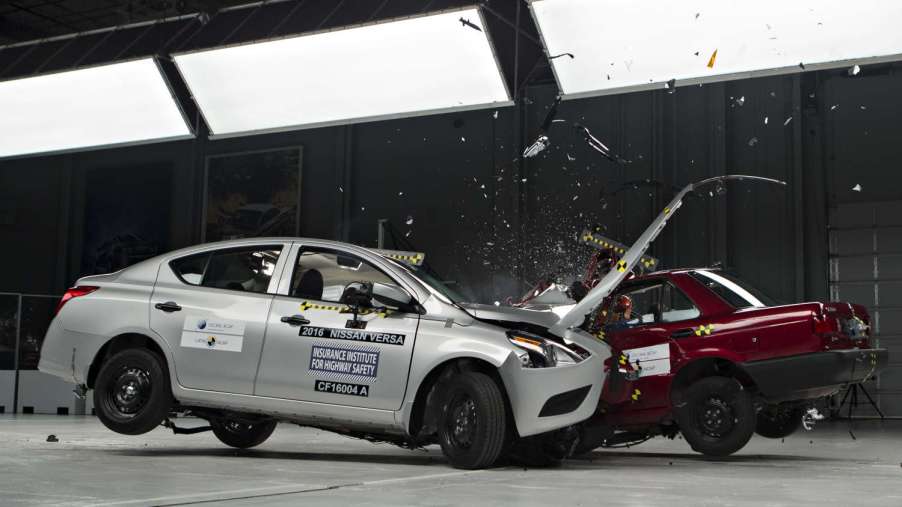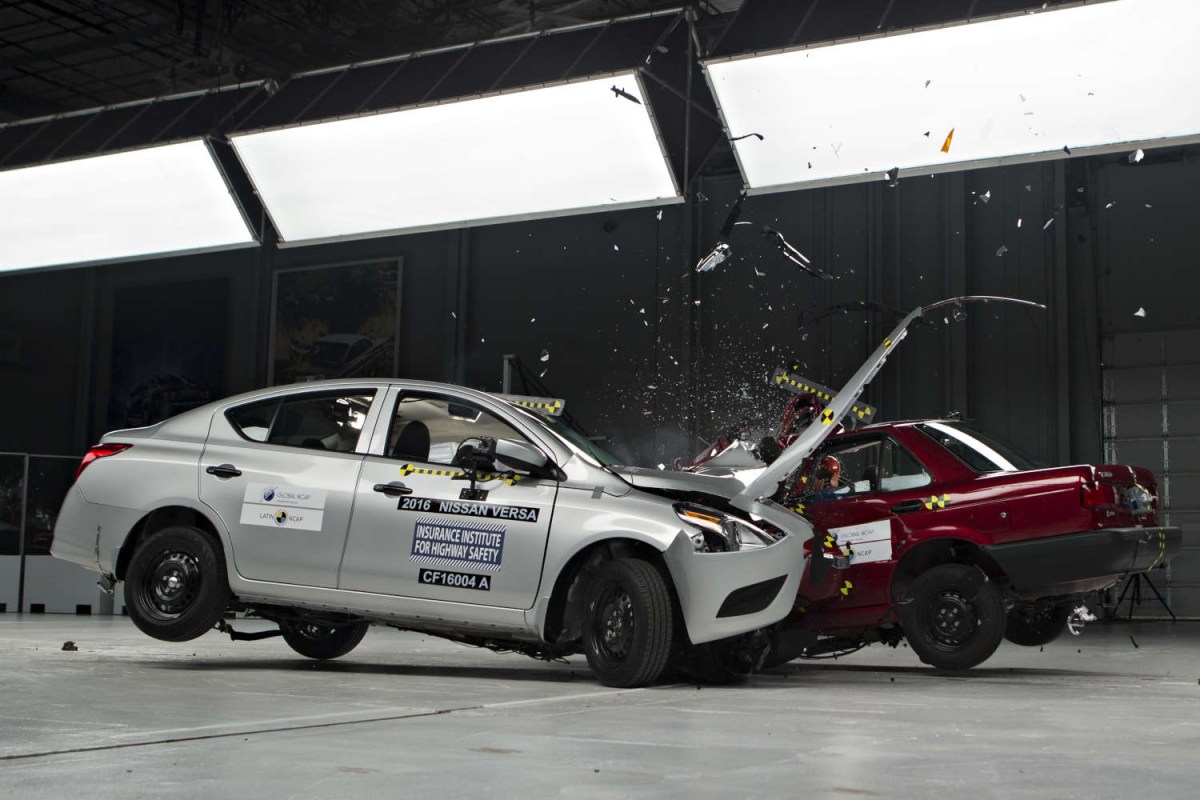
AAA Tests Reveal Limitations of Automatic Emergency Braking Technology
A vehicle’s safety features are among the most significant selling points when shopping for a new car. While technology like seat belts, airbags, and anti-lock braking systems (ABS) are standard on new vehicles today, there was a time they were newly introduced safety features. Once available only on premium automobiles, automatic emergency braking (AEB) is a relatively new safety technology that’s becoming common across all models from some popular automakers, but AEB has limitations.

What is automatic emergency braking (AEB)?
According to AAA, AEB systems use “forward-facing cameras and other sensors” to monitor the area ahead of the vehicle while in motion. When the cameras or sensors detect an imminent crash, the system automatically engages the vehicle’s braking system.
Automakers continue working on upgrading AEB hardware and software, and newer systems work well to reduce the frequency and severity of slow-speed rear-end crashes.
AAA says that crashes involving “T-bones and left turns in front of oncoming vehicles” are among the deadliest scenarios. “In accidents involving two passenger vehicles during which the striking vehicle did not lose traction or leave the roadway before the collision,” those two crash types accounted for 39.2% of total vehicle accident fatalities from 2016 to 2020.
So how well do newer AEB systems work in these real-world situations?
How did AAA test AEB system performance?
AAA acquired four different vehicles from automakers or “specialty rental fleets” and had them serviced by authorized dealers before testing to ensure the AEB systems functioned as designed. The test vehicles included the following:
- 2022 Chevrolet Equinox LT with “Chevy Safety Assist.”
- 2022 Ford Explorer XLT with “Pre-Collision Assist with Automatic Emergency Braking.”
- 2022 Honda CR-V Touring with “Honda Sensing.”
- 2022 Toyota RAV4 LE with “Toyota Sensing.”
For testing purposes, AAA used a Low Profile Robotic Vehicle (LPRV) with a “soft car” attachment as the target to avoid damaging the test vehicles. Tests included rear-crash prevention involving approaching a stationary target vehicle at 30 and 40 mph, the target vehicle crossing 90 degrees to the test vehicle path at 30 mph, and the target vehicle turning left in front of the test vehicle at 10 mph.
AAA’s AEB system test results
AAA’s 30- and 40-mph rear-end collision avoidance testing increased the current 12- and 25-mph mandated test speeds. Test cars’ AEB systems avoided collisions in 17 of 20 test runs at 30 mph and reduced the three impacts’ speeds by 86% on average.
However, at 40 mph, only six of 20 test runs avoided collisions, and speed upon impact slowed by an average of 62%. In addition, the 30- and 40-mph rear-collision AEB tests saw all four test vehicles provide an alert and apply emergency braking on every run.
At 30 mph, only the Chevrolet Equinox and Honda CR-V failed to avoid colliding with the target vehicle. However, at 40 mph, all four test vehicles made contact in at least one of its five runs, with only the Chevrolet Equinox and Ford Explorer failing to avoid the target vehicle on all five runs.
In contrast, neither the 30 mph 90-degree crossing test nor the 10 mph left-turn test resulted in any test cars avoiding a collision with the target vehicle. The most startling finding is that none of the test vehicles provided an alert or applied emergency braking before impact during these failed tests.
AAA’s detailed “Evaluating Automatic Emergency Braking 2022” report states, “this finding illustrates the reality that current AEB systems are ineffective at mitigating or preventing intersection-based collision scenarios.” While the results indicate AEB system failure in some scenarios, AAA encourages automakers and regulatory agencies to continue evolving AEB systems and tests to address these shortcomings.
More importantly, drivers must know their car’s “AEB system’s limitations and remain engaged when behind the wheel.”



